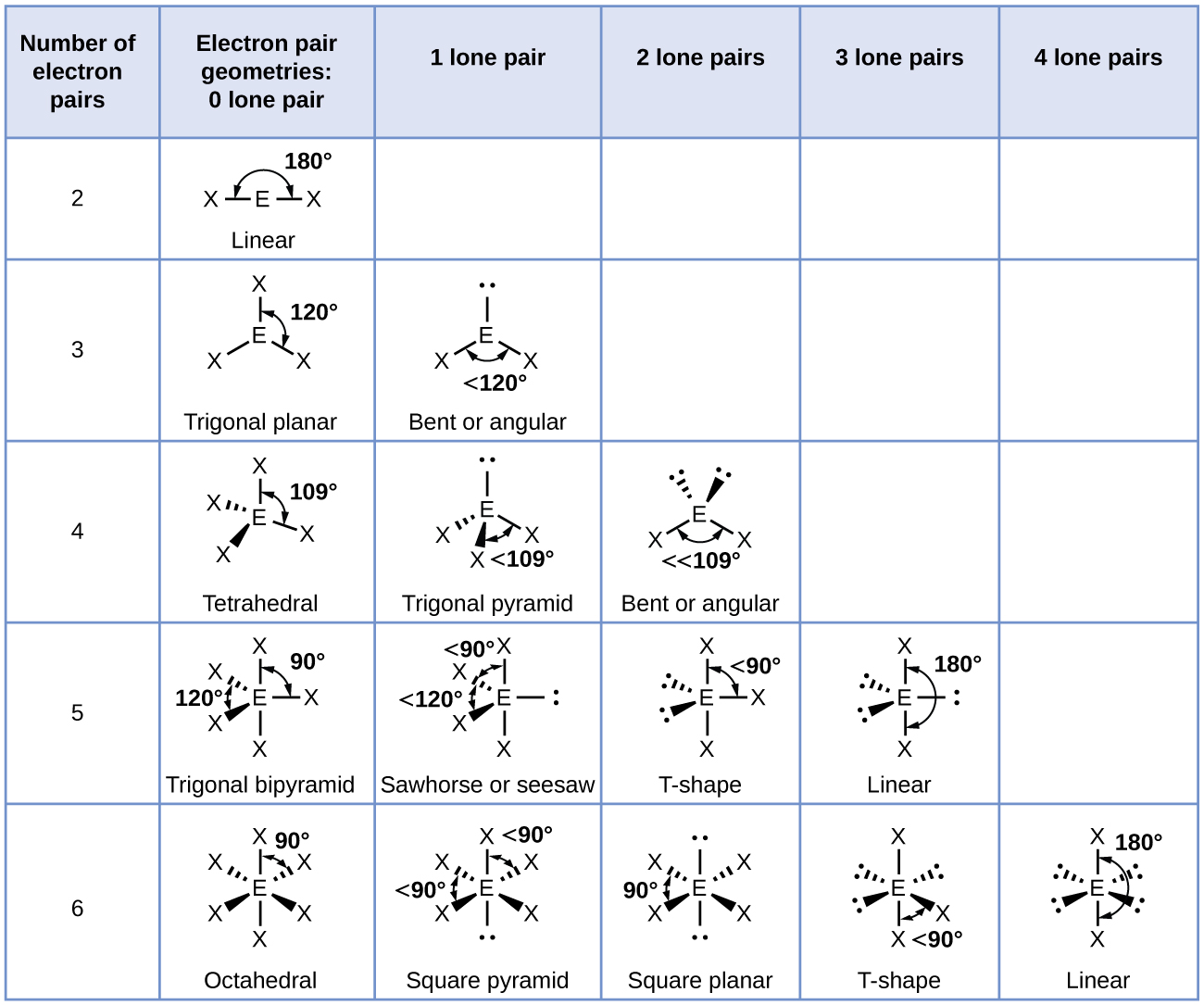

approximate two-electron integrals) might lead to a small split of the degenerate levels, but iterative procedures used in the majority of quantum chemical methods can increase this small difference to a physically wrong description of the system. Numerical inaccuracy due to a limited precision or approximations used for the computing the Hamiltonian (e.g. This strategy dramatically reduces the development costs for the quantum chemical software, but it also might lead to non-physical symmetry breaking of the electronic wavefunction.
CONSTRUCTING A MOLECULAR GEOMETRY TABLE FULL
Another quite common problem related to mismatch between the symmetry of the nuclei and the symmetry of the wavefunction has a technical nature: many computational codes can not utilise the information about the full point group of the molecule, and uses only a restricted subset (usually an Abelian subgroup). A symmetry broken solution for a wavefunction can also be caused by the computational method: the most famous example of that kind is Unrestricted Hartree–Fock method, where the symmetry of the electronic wavefunction is lower than the symmetry of nuclei due to the electron spin. Symmetry breaking of the wavefunction can be caused by external electrostatic or magnetic fields, or observed as anti-ferromagnetic ordering in solids. Īlthough the use of symmetry can still provide a performance increase, other aspects of using symmetry in quantum mechanics become more important: an ability to obtain the wavefunction with desired symmetry, which does not necessarily match the symmetry of the nuclei. In modern times this particular motivation has all but disappeared, since the majority of molecular systems show no symmetry, and computational algorithms are designed to handle large Hamiltonians.

Some calculations were only possible due to the ability to split the Hamiltonian into smaller portions, determined by the irreducible representations (irreps) of the symmetry group. In the early days of quantum chemistry, the use of molecular symmetry was motivated by necessity to reduce the size of the problem at hand.
CONSTRUCTING A MOLECULAR GEOMETRY TABLE SOFTWARE
The software has been released as a stand-alone, open source library under the MIT license and integrated into both computational and molecular modelling software. Symmetrisation of molecules use a projection into the totally symmetric space, whereas for wavefunctions projection as well and partner function determination and averaging is used. The character tables for the point groups are auto generated, and the algorithm is described. The SALCs are constructed with the use of projection operators for the irreducible representations, as well as subgroups for determining splitting fields for a canonical basis. An algorithm for determining the symmetry adapted linear combinations (SALCs) of atomic orbitals is also presented. The symmetry detection algorithm is a clustering algorithm for symmetry invariant properties, combined with logical deduction of possible symmetry elements using the geometry of sets of symmetrically equivalent atoms. Algorithms for developing these tools as well as an implementation are presented. Automatic detection of point groups as well as symmetrisation of molecular geometry and wavefunctions are useful tools in computational quantum chemistry.


 0 kommentar(er)
0 kommentar(er)
